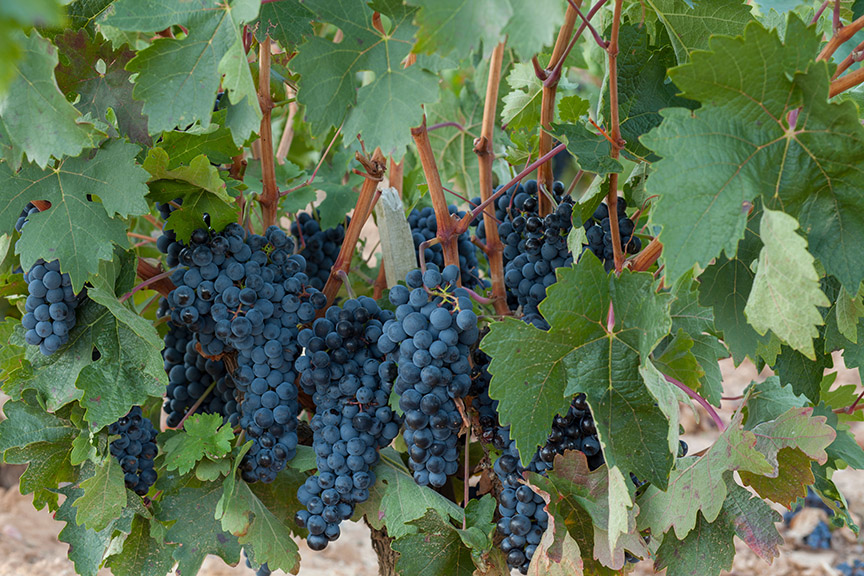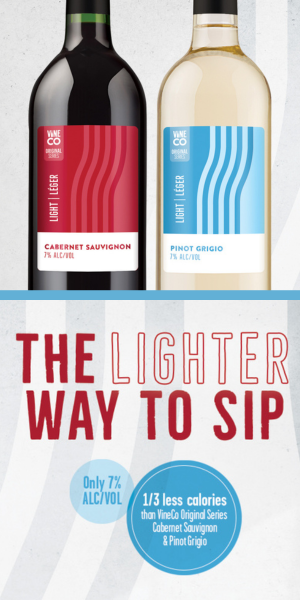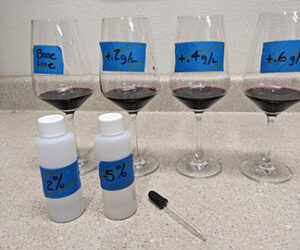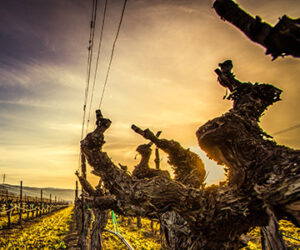My introduction to Tempranillo, as a winemaker, was an unusual one, and by pure luck. I was attending a charity auction event with a winery I was consulting for at the time, and the owner of the winery won 30 cases of premium Tempranillo from Contra Costa County, California, in the silent auction. Exuberant over her winning luck, the owner turned to me and asked “Great, we won Tempranillo! Now what do we do with that?” This wonderful stroke of luck turned into a many year’s love affair with Tempranillo and the crafting of one of my favorite wines in my portfolio at Hawk Ridge Winery, not to mention a staff- and customer-favorite as well. And while the grape has proved a bit more complex to learn the nuances of within a winemaking capacity, it is also the most interesting wine to make as it requires slight tinkering and finesse throughout its maturation process, keeping this winemaker thoroughly engaged throughout its aging life.

Tempranillo is a black-skinned grape that is cultivated all over the world for wine production, though it is most associated with Spanish wine as 90% of its plantings can be found within Spain. It is Spain’s national grape and thought of as the country’s “noble grape” variety. Tempranillo was transported by the Phoenicians to the Iberian Peninsula in the 9th century. The name was derived from the Spanish word “temprano,” meaning “early” due to its ability to ripen faster than its geographical grape peers. With the transport of the grape to the Iberian Peninsula started the great proliferation of the grape over the next few centuries, being known locally as Ull de Llebre, Cencibel, Tinto Fino, and Tinta del Pais within Spain, and Tinto Roriz and Aragonez within Portugal. The designation of Tinto Roriz is typically used in reference to Tempranillo grown for the production of Port-style wines.
Tempranillo was long thought to be a genetic variant of Pinot Noir due to its color and flavor profile; however, in 2012, Spanish grape geneticists identified its genetic parents to be Albillo Mayor and Benedicto. Albillo Mayor is still a variety widely cultivated throughout the Iberian Peninsula for white wine production, whereas Benedicto is rarely cultivated or studied.
In the Vineyard
Tempranillo is famous for being a vigorous grower, producing long canes that can extend to 16 feet (4.9 m). The vines thrive in “poor” soil, or soils with lower levels of organic matter, as it helps to stunt some of the vegetative growth. Lateral growth will need to be curtailed throughout the growing season with hedging. Soils that benefit the growth of Tempranillo are usually gravelly or loamy in their composition with lower amounts of organic matter and calcareous in their makeup. The limestone base is often a point of growers’ pride in Europe, being a factor in the soil composition of the world’s most famed growing regions. This argument certainly applies to Tempranillo; however, it is such a vigorous grower, it can thrive in any soil with adequate drainage. Cover crops are suggested in soils with high amounts of organic matter to help reduce some of the plant vigor via competition for nutrients.
In typical vineyard environments, vertical shoot positioning works extremely well as a trellising system for Tempranillo vines. This helps provide extra wire support to the long canes and additional foliage wires can help distribute the weight of the longer canes. When planting a vineyard of Tempranillo, it is recommended vines be planted with 8–10 foot (2.4–3 m) spacing between them to allow for extra vegetal growth for sites with high levels of soil nutrition and organic matter. For soils with less nutritious composition and sandier texture, the vines may be less vigorous and can be planted as close as 5–6 feet (1.5–1.8 m) apart and trained on a mid-wire bilateral system.
Disease can be a problem for Tempranillo grown in moist climates. The vine is highly susceptible to black rot, downy mildew, and powdery mildew. Airflow is limited if the canopy vigor is not well managed and the vines create a dense leaf cover, exacerbating the risks of mildews. Having low precipitation and low humidity will also help to curtail the proliferation of fungal pathogens as precipitation is a vector for their transmittal. Regular hedging and leaf pulling throughout the season to increase airflow and sun exposure will be necessary in high-vigor sites.
Once mature, Tempranillo grape skins are an admirable deep blue/black. The vigor of the vine can easily lead to overcropping of the grape, which will negatively affect the wine with more dilute flavors and weaker color intensity. Crop loads under 8 tons per acre (18 tonnes per hectare) help to preserve concentrations of flavor and color within the berry. Their skin isn’t as thin as Pinot Noir, but is still considered a relatively thin-skinned grape, similar to Zinfandel, which also ripens earlier than many reds. Due to the sheer bulk of Tempranillo grown in Spain, it is used widely across wine production in that country, being the principal grape in the world-famous Rioja blends. Other grapes such as Grenache, Graciano, and Mazuelo are also added in a more supportive role to the complex Rioja blends.
In the Winery
In my experience working with Tempranillo in the cellar, the use of pectic enzymes and extended maceration time to get excellent color extraction can be a tricky balance. Due to the slightly thinner skins of the grape, if the winemaker uses too much pectic enzyme or allows it to sit for too long, the skins can break down quite a bit and can cause difficulties when pressing. I have found that using the lower end of the recommended pectic enzyme dosage and introducing it a day or two after yeast inoculation helps preserve the integrity of the skins for pressing. This then allows for a two-week skin contact time while fermenting to achieve excellent color. Also, the addition of a small percentage of another varietal such as Monastrell or Mazuelo can help to fortify the color when added at crush and co-fermented with the Tempranillo. If the skins do begin to break down I will use rice hulls when pressing to alleviate any clogging.
While delicious on its own, I believe Tempranillo benefits when blended with other varieties. The delicious strawberry jam flavor characteristic of the grape can be made more interesting and complex with the addition of a more acidic and tannic varieties, changing the strawberry jam flavor to more of a fresh strawberry note, and adding a more voluminous mouthfeel to the resulting wine. Tempranillo can lose acidity as it ripens, so careful valuation of the pH and TA (titratable acidity) of the must pre-fermentation should be conducted to aid the winemaker in their decisions on acidulation. If you are able to source fruit from a reliable grape brokerage or farm year after year, and you become familiar with the nature of the grapes that you receive, the winemaker can choose complementary grapes for blending that will naturally acidulate or add structure to the blend. Sometimes, just a 10% addition of another variety can balance out the resulting wine.
While there are many yeast strains that will work well in fermenting Tempranillo, there are a few strains noteworthy of amplifying its famous strawberry character, nuances of leather, and fostering the baking spice finish that the variety can be known for. I have enjoyed the results of utilizing RUBY, Fermivin MT 48, and ICV GRE in Tempranillo blends. All of these yeasts promote red fruit character and also help create a rounder and fuller mouthfeel in the wines. A newer strain, CVRP, isolated from Rioja, Spain, shows excellent promise in helping to fortify the structure and creating the balance of spice and red fruit jam within the finished wine.
Rioja blends have traditionally been aged in American oak barrels, helping to add more baking spice and vanilla complexities to their charges. Like many iconic European wines, their country of origin, in this case Spain, has set up distinct categories of aging and quality that are regulated by the government. Joven or Generico refers to wine that is unoaked and consumed young (under one year). Roble designates wine that has been aged in oak for less than one year. Crianza begins the classifications for more premium Rioja wines with their discernment being for wines aged in oak for one year and aged in total for a minimum of two years between the barrel and the bottle before release. Reserva refers to wines that also have one year of oak aging but are aged for a minimum of three years in the barrels and bottles before sale. Lastly, Gran Reserva indicates these wines have aged in barrel a minimum of two years with a total of five years of aging before their release. The Gran Reserva classification warrants the highest price tag due to the long-term aging and care for these wines that requires a significant labor investment on behalf of the winemakers to craft these world-renowned wines.
While many of us are familiar with the “noble grapes” of France, Tempranillo is another noble grape of the world worth exploring. Its prevalence in Spanish winemaking culture, versatility in wine production as a rosé or a full-bodied red, and its utilitarian capacity to be paired with foods, make it an incredibly worthwhile grape to experiment with and certainly has earned its place as the noble grape of Spain and within my wine glass.
Tempranillo Recipe Yield 5 gallons (19 L)
Ingredients
125 lbs. (57 kg) Tempranillo grapes
Sanitizing solution of potassium metabisulfite (KMBS)
KMBS powder and citric acid powder
5 g yeast (RUBY, Fermivin MT48, ICV GRE, RP15, or D254)
Liquid pectic enzyme
7.5 g Go-Ferm Sterol Flash
7.5 g Fermaid O
5 g Fermaid K
5 g Opti-Red (optional)
5 g Booster Rouge (optional)
5 g oak dust, French medium+ toast
1 packet of MLF bacteria (Wyeast liquid cultures)
Distilled water
Table sugar (if Brix is low)
American medium oak chips, cubes, or spiral
Equipment Needed
Crusher/destemmer
Wine press
15-gallon (57-L) fermentation bucket or bin
5-gallon (19-L) carboy
Airlock and bung
pH meter
Hydrometer
Thermometer (digital preferred)
Step by step
1. Make a fresh batch of KMBS sanitizing solution using 1 Tbsp. of KMBS powder and 1 Tbsp. of citric acid mixed into 1 gallon (3.8 L) of clean water. Fill a spray bottle with the KMBS/citric acid solution and spray down your processing equipment.
2. Crush and destem fresh grapes and transfer immediately into a sanitized 15-gallon (57-L) fermentation bucket.
3. Add 50 ppm of KMBS to kill off natural yeast. Utilize the sulfite calculator at www.winemakermag.com/sulfitecalculator to assist in your calculations. Throw a cover on the must bucket and allow to sit overnight in a cool area. This will kill off negative microbes and allow the must to come to a temperature of 60 °F (16 °C).
4. The next morning, add the oak dust and stir well.
5. Take measurements of your juice, including volume, Brix, pH, and TA. Adjust the juice to a starting Brix of at least 24, a pH of ~3.5, and TA of 6–7 g/L. Utilize tartaric acid if needed to increase acidity. www.wineadds.com has helpful calculators for adjusting acidity in must.
6. To prepare the yeast, warm 50 mL of distilled water to 60 °F (16 °C) and add to a mixing bowl. Then add the Go-Ferm Sterol Flash. Stir well. Add yeast and stir well. Allow to sit for 15 minutes. Then mix in thoroughly to the juice with a sanitized stir paddle.
7. Place a lid on the fermentation pail loosely and wait 24 hours to observe yeast activity. Take Brix measurements twice daily via a hydrometer to ensure the start of fermentation. Take temperature measurements daily. Try to keep the fermentation temperature between 70–85 °F (21–29 °C) to help secure color but also avoid off-aromas. To do this, you may need to put the fermentation bin in a cool area of your basement, outdoor porch, or refrigerator, or in a larger bin (garbage pail) filled with ice water.
8. After one or two days of fermentation, check the Brix and begin adding nutrients when it drops by a degree or two. Add 100 mL of distilled water to a mixing bowl and add 7.5-g Fermaid O and the Opti-Red and Booster Rouge if you choose to use them. Mix well to create a slurry and then stir into the fermenting juice.
9. One or two days after fermentation has begun, add the pectic enzyme at the lower end of the suggested dosage and stir well.
10. Continue to monitor Brix and temperatures daily (twice daily would be preferred). When the Brix has declined to between 15–11 °Brix, add the Fermaid K in the same way you added the Fermaid O.
11. When the temperature is between 75–80 °F (24–27 °C) and the alcoholic fermentation is well underway, add the Wyeast MLF packet. Stir to punch down the skins and incorporate the bacterial cultures.
12. Continue to ferment as close to 80 °F (27 °C) as possible until the wine has fermented to dryness (approx. -1 to -2 °Brix). This should take 7–21 days.
13. When the wine has achieved dryness, press out the wine in a sanitized press and pour all of the wine into a 5- or 6-gallon (19- or 23-L) carboy with an airlock to complete its MLF.
14. After 5–7 days, rack off the lees into a clean, sanitized carboy. Affix bung and airlock and allow to sit for a month. If you have an air gap after racking, either top off with a complementary wine such as Pinot Noir or a Rioja blend or add sanitized glass marbles to displace the headspace.
15. Monitor the MLF via paper chromatography or measure the reduction of malic acid via a meter to track the progression of the fermentation. When the MLF is complete, rack the wine and add 50 ppm of KMBS.
16. A month later, rack it again into a sanitized carboy and add another 50 ppm of KMBS. Consider degassing at this point, briskly stirring with a wine whip or whisk. It’s recommended to rack the wine into a food-grade bucket and degassing in that vs. a glass carboy. Never put a glass carboy under suction or negative pressure.
17. While the wine is aging, add oak chips, cubes, or a stave to add a bit of oak to enhance the wine.
18. Allow the wine to age, maintaining a free SO2 level appropriate for the pH. WineMaker’s sulfite calculator will help you determine the proper dosage given the parameters of pH and volume. You can filter the wine after 8 months of aging if you choose. At this point, it should have been racked approximately 4 times and have completed its oak aging.
19. You may consider cold stabilizing or acquiring a cold stabilizing product such as Zenith Color. These products may only be used if the wine is filtered down to 0.5 micron as turbidity will interfere with their effectiveness.
20. Once cold stability has been achieved, taste the wine and consider if it is ready to bottle. Fining agents such as Super Kleer or mouthfeel enhancers such as gum arabic may improve mouthfeel and clarity.
21. Bottle wine once you are content with the flavor and stability of the wine. Always add a small amount of sulfite before bottling — 10 ppm beyond the sulfite calculator’s recommended value — to account for oxygen uptake during the bottling process.






